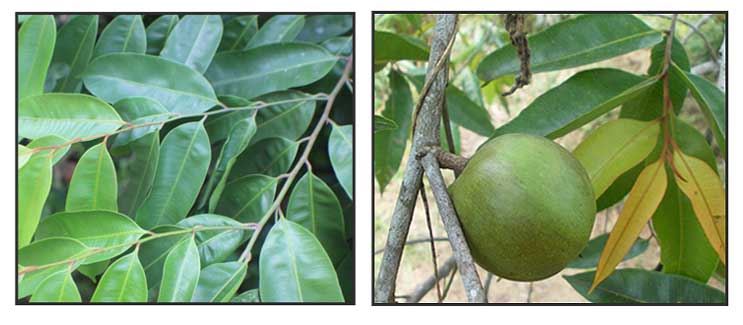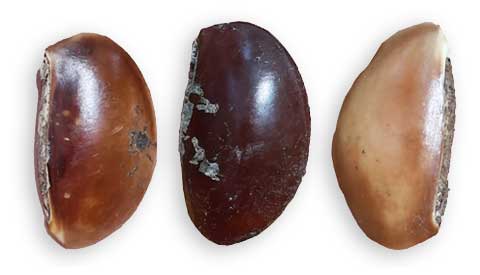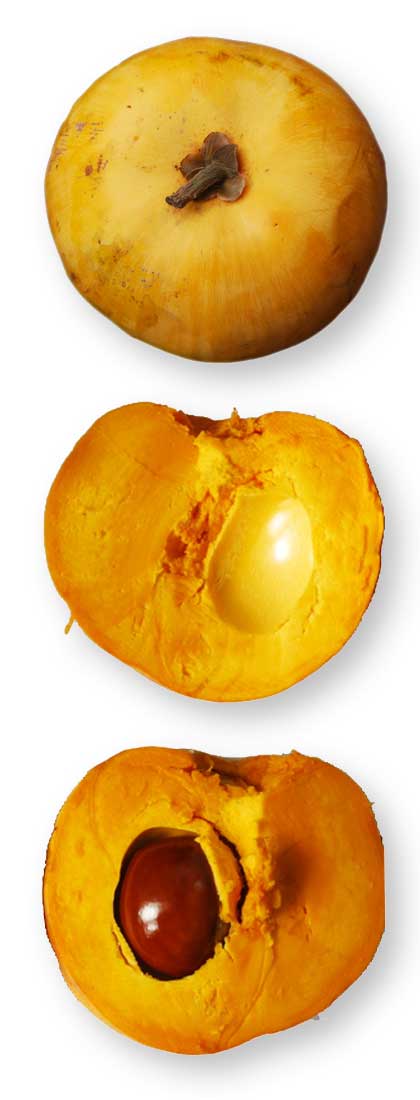
Family • Sapotaceae
Kalalang
Donella lanceolata (Blume) Aubrév
INDIAN STAR APPLE
Duo hua jin ye shu
| Scientific names | Common names |
| Chrysophyllum acuminatum Roxb. | Buka-buka (Tagbanua) |
| Chrysophyllum bancanum Miq. | Kalala (General, Ibanag) |
| Chrysophyllum dioicum Koord. & Valeton | Indian star apple Engl.) |
| Chrysophyllum javanicum Steud. | Star apple (Engl.) |
| Chrysophyllum lanceolatum (Blume) A.DC. | |
| Chrysophyllum lanceolatum var. papuanum C.T.White | |
| Chrysophyllum lanceolatum var. stellatocarpon P.Royen | |
| Chrysophyllum pentagonum Hance | |
| Chrysophyllum roxburghianum Speede | |
| Chrysophyllum roxburghii G.Don | |
| Chrysophyllum roxburghii var. papuanum C.T.White | |
| Chrysophyllum sumatranum Miq. | |
| Donella lanceolata (Blume) Aubrév. | |
| Donella roxburghii (G.Don) Pierre ex Lecomte | |
| Lucuma lanceolata (Blume) Zipp. | |
| Lucuma tomentosa Zipp. | |
| Niemeyera papuana H.J.Lam | |
| Nycterisition lanceolatum Blume | |
| Donella lanceolata is an accepted species. KEW: Plants of the World Online | |
| Other vernacular names |
| CHINA: Duo hua jin ye shu. |
| CAMBONIA: Bai damnoeup. |
| INDIA: Bonpitha, Kolmou gos (Assamese); Petakara (Bengali); Thaibon biphang (Dimasa); Theipabon (Kuki); Thei pabuan (Mizo); Hale, Bokale (Kannada); Kaappaalai (Tamil); Noolambazham, Pulichakka, Aatha, Athapala (Malayalam). |
| INDONESIA: Dondon gisalakino (Tobela, Sulawesi), Ki baiyongbong (Sundanese), Pelai eilin (Kalimantan). |
| MALAYSIA: Pulut-pulut. |
| MYANMAR: Than-kya-pin. |
| SRI LANKA: Koholle lavalu (Sinhala). |
| THAILAND: Hua tao, Nam phueng (Peninsular); Khe phueng (eastern). |
| VIETNAM: S[af]ng s[as]p, C[aa]y s[aj]p, C[aa]y s[ow]n xa. |
| OTHERS: Lawulu, Nyatoh. |
Distribution Constituents Studies Availability |
October 2025
![]()
 |
| Â Â Â Â Â Â Â Â Â Â Â Â Â Â Â Â Â Â Â Â Â Â Â Â Â PHOTOS / ILLUSTRATIONS |
| IMAGE SOURCE: Donella lanceolata leaves / © Flora of Sri Lanka / Non-commercial use / Image modified / Click on image or link to go to source page / Flora of Sri Lanka |
| IMAGE SOURCE: Donella lanceolata fruiting leaves / © Aruna Yasapalitha / Non-commercial use / Image modified / Click on image or link to go to source page / Flora of Sri Lanka |
| OTHER IMAGE SOURCE: Donella lanceolata seeds / © Rohit Naniwadekar / Some rights reserved / Image modified / NC BY-4.0 International Deed / Image modified / Click on image or link to go to source page / iNaturalist |
| OTHER IMAGE SOURCE: Donella lanceolata / Fruits / © eFloraOfIndia / Non-commercial use / Images modified / Click on image or link to go to source page / eFloaOfIndia |
Additional
Sources and Suggested Readings |
• |
DOI: It is not uncommon for links on studies/sources to change. Copying and pasting the information on the search window or using the DOI (if available) will often redirect to the new link page. (Citing and Using a (DOI) Digital Object Identifier) |
| Â Â Â Â Â Â Â Â Â Â Â Â Â Â Â Â Â Â Â Â Â Â Â Â Â Â Â Â Â Â List of Understudied Philippine Medicinal Plants |
| Â Â Â Â Â Â Â Â Â Â Â Â Â Â Â Â Â Â Â Â Â New plant names needed The compilation now numbers over 1,720 medicinal plants. While I believe there are hundreds more that can be added to the collection, they are becoming more difficult to find. If you have a plant to suggest for inclusion, native or introduced, please email the info: scientific name (most helpful), local plant name (if known), any known folkloric medicinal use, and, if possible, a photo. Your help will be greatly appreciated. |
• |
 |

 Gen info
Gen info

